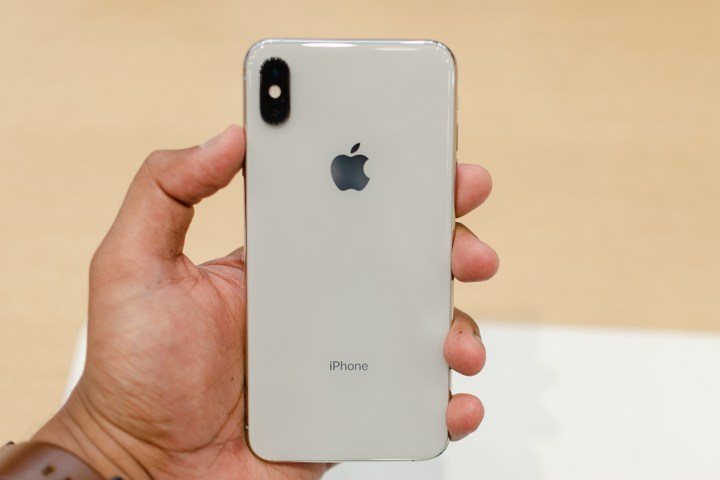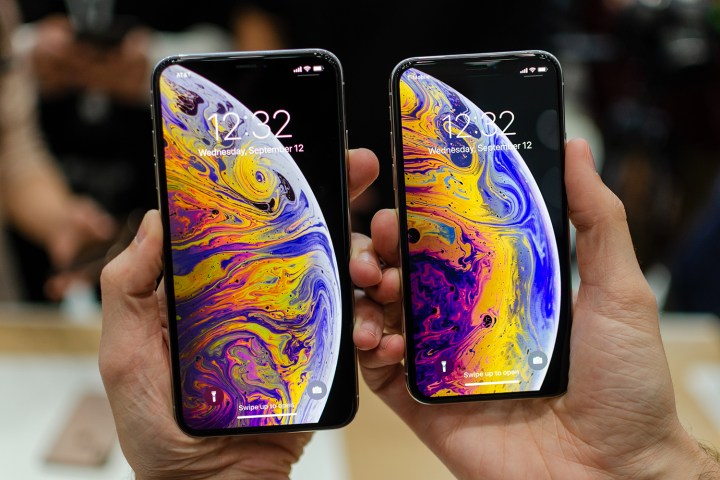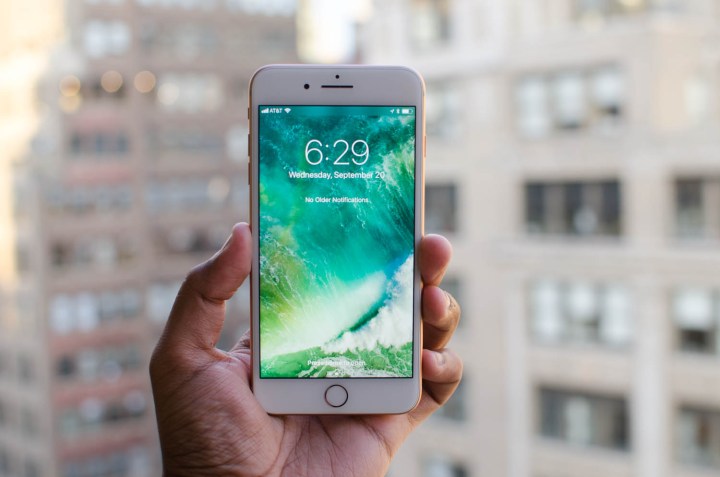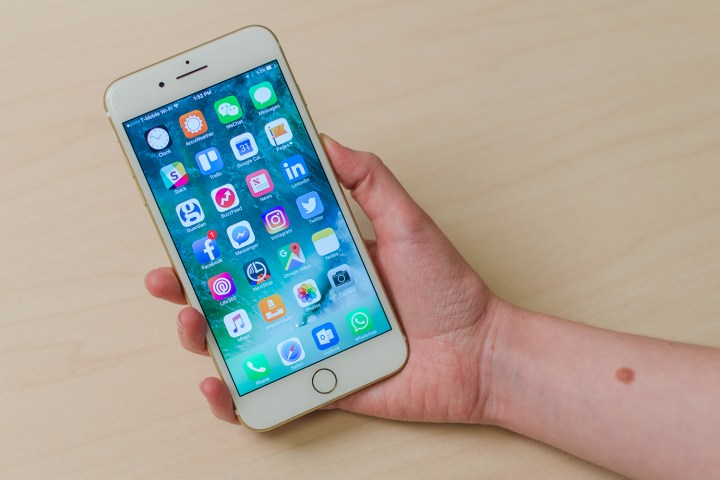
Plus-sized phones should watch their step — there’s a new super-sized sheriff in town. Apple’s new iPhone XS Max has been revealed, and it’s a huge and powerful phone packed with the latest technological advances. With an enormous 6.5-inch OLED display and the power of the new A12 processor pushing smartphone performance beyond previous limits, the iPhone XS Max is sure to be tempting if you like a large screen.
But it’s never that simple. Though the “Max” moniker was created to surpass the old Plus models, Apple’s been making “Plus” models for years, and so there’s a lot of competition within Apple’s own stables. Which phone wins when the iPhone XS Max, iPhone 8 Plus, and iPhone 7 Plus go head-to-head, and which should you buy? Let’s take a look.
Specs
| iPhone XS Max | iPhone 8 Plus | iPhone 7 Plus | |
| Size | 157.5 x 77.4 x 7.7 mm (6.20 x 3.05 x 0.30 inches) | 158.4 x 78.1 x 7.5 mm (6.24 x 3.07 x 0.30 inches) | 158.2 x 77.9 x 7.3 mm (6.23 x 3.07 x 0.29 inches) |
| Weight | 208 grams (7.34 ounces) | 202 g (7.13 ounces) | 188 g (6.63 ounces) |
| Screen size | 6.5-inch Super Retina OLED | 5.5-inch IPS LCD | 5.5-inch IPS LCD |
| Screen resolution | 2,688 x 1,242 pixels (458 pixels per inch) | 1,920 x 1,080 pixels (401 pixels per inch) | 1,920 x 1,080 pixels (401 pixels per inch) |
| Operating system | iOS 12 | iOS 12 | iOS 12 |
| Storage space | 64GB, 256GB, 512GB | 64GB, 256GB | 32GB, 128GB, 256GB |
| MicroSD card slot | No | No | No |
| Tap-to-pay services | Apple Pay | Apple Pay | Apple Pay |
| Processor | A12 Bionic | A11 Bionic | A10 Fusion |
| RAM | 4GB | 3GB | 3GB |
| Camera | Dual 12MP rear (both with OIS), 7MP TrueDepth FaceTime HD front | Dual 12MP rear (both with OIS), 7MP FaceTime HD front | Dual 12MP rear (both with OIS), 7MP FaceTime HD front |
| Video | 2,160p at 60 fps, 1,080p at 240 fps | 2,160p at 60 fps, 1,080p at 240 fps | 2,160p at 60 fps, 1,080p at 240 fps |
| Bluetooth version | Bluetooth 5.0 | Bluetooth 5.0 | Bluetooth 4.2 |
| Ports | Lightning | Lightning | Lightning |
| Fingerprint sensor | No, FaceID instead | Yes | Yes |
| Water resistance | IP68 | IP67 | IP67 |
| Battery | TBC
Fast charging (fast charger not included) Qi wireless charging |
2,675mAh
Fast charging offers up to 50 percent charge in 30 minutes (fast charger not included) Qi wireless charging |
2,900mAh |
| App marketplace | Apple App Store | Apple App Store | Apple App Store |
| Network support | T-Mobile, AT&T, Verizon, Sprint | T-Mobile, AT&T, Verizon, Sprint | T-Mobile, AT&T, Verizon, Sprint |
| Colors | Gold, Silver, Space Gray | Gold, Space Gray, Silver | Jet Black, Black, Silver, Gold, Rose Gold, Red |
| Price | $1,100 | $700 | $670 |
| Buy from | Apple | Apple | Apple |
| Review score | Hands-on review | 4 out of 5 stars | 4 out of 5 stars |
Performance, battery life, and charging

The most recent version of the iPhone has always been one of the most powerful smart devices available, and that’s not about to change with the iPhone XS Max. Apple claims the new A12 Bionic processor is up to 40 percent faster than the A11 Bionic in the iPhone 8 Plus. The new Neural Engine in the A12 can handle up to 5 trillion operations per second, and promises to add even more grunt to Apple’s already impressive iPhone performance. There’s very little doubt the A12 is the most powerful processor here, though we don’t really have any complaints about the 8 Plus in terms of performance.
Battery power is a bit closer, though. Each of these phones will last you the day, and though Apple claims the XS Max will last longer than the iPhone X‘s considerable battery life, we need to put it to the test before we can really judge. You’ll only find wireless and fast charging on the XS Max and 8 Plus, though neither of them comes with a fast charger in the box.
There’s still a lot that’s unclear here — but what is clear is that the iPhone XS Max’s processor is stupendously powerful and wipes the floor with the competition.
Winner: iPhone XS Max
Design and durability
- 1. iPhone Xs Max
- 2. iPhone 8 Plus
- 3. iPhone 7 Plus
Apple came in for some criticism for repeating the same design in the iPhone 6, 7, and 8 range. Thankfully, that changed with the iPhone X and all the new iPhones this year sport the newer look. The iPhone XS Max is one of the most beautiful phones on the planet. It ditches the hefty bezels you’ll find on the iPhone 8 Plus and 7 Plus for a sleek, curved design, with glass laid over a high-quality stainless steel frame. It’s clear to us that the iPhone XS Max is the better-looking phone of these three. Apple has managed to pack a screen that’s a full inch bigger into a slightly smaller body by killing those bezels.
Durability paints a slightly different picture. The iPhone XS Max and 8 Plus both come with glass bodies, which means they carryshattering risks not present in the aluminum iPhone 7 Plus. But the iPhone XS Max brings full IP68-rated water-resistance to the table too, further guarding against the negative effects of water immersion. As is now the case with Apple, there’s no headphone jack on any of these phones, and you won’t find a fingerprint sensor on the iPhone XS Max either — it’s been replaced with FaceID.
Despite durability worries with glass and a lack of Touch ID, it’s another clear win for the iPhone XS Max.
Winner: iPhone XS Max
Display

Little changed between the displays on the iPhone 8 Plus and 7 Plus. Both rock great-looking 5.5-inch IPS LCD displays, and while they’re more than good enough, they struggle to compete with the Super Retina OLED display that dominates the iPhone XS Max. It’s a monster, that’s a full inch larger than the other phones’ screens at 6.5-inches. It’s beautiful too, with deep blacks and support for HDR10 and Dolby Vision. With a seamless edge-to-edge design, the XS Max’s OLED screen is leaps and bounds above its predecessors.
While all three have sharp and detailed displays to show off your videos and images, the iPhone XS Max has the objectively better display.
Winner: iPhone XS Max
Camera

When read straight off the specs sheet, you’d be forgiven for assuming each of these phones has the same camera, as each sports a rear-facing pair of 12-megapixel lenses. But the devil’s in the details, and Apple has made great advances in its photography with each generation. Thanks to the increased power of the A12 processor, the XS Max is capable of far more software trickery than its predecessors. You can adjust the level of background bokeh blur in your photos — even after the shot has been taken — and the new Smart HDR mode can auto-adjust and compile an HDR photo in milliseconds. We haven’t had much chance to test it yet, but the iPhone XS Max’s camera has already impressed us.
The iPhone XS Max is also equipped with the iPhone X’s TrueDepth selfie camera that enables FaceID unlocking and Animoji support, as well as solid Portrait Mode-style selfies. Video capabilities have also been improved, though it might be harder to see the differences there.
While the iPhone 7 Plus and 8 Plus still possess astoundingly good cameras, the iPhone XS Max’s camera really takes that performance to the next level. It wins comfortably.
Winner: iPhone XS Max
Software and updates

Apple is well-known for providing a new version of iOS every year, and keeping older phones up-to-date longer than its competitors. While you can expect the iPhone Xs Max to be updated further into the future, the update schedule still looks bright for both the 8 Plus and 7 Plus. With the older iPhone 6 still receiving updates, you can expect all of these phones to at least get iOS 13, and probably iOS 14 too.
The iPhone XS Max will get these updates for longer, so we’re awarding the win to it — but it doesn’t have much of a lead.
Winner: iPhone XS Max
Special features

Many of the iPhone’s special features are built into iOS, so you’ll find similar capabilities on each of these phones — including Apple’s augmented reality platform, ARKit. The advanced processor in the iPhone XS Max will obviously run these features better, but it’ll be much the same in most use cases.
The TrueDepth front-facing camera on the XS Max does offer features like FaceID unlocking and Animoji, and that’s a significant advantage for the new iPhone. Animoji is still fairly niche, but FaceID certainly isn’t — and it wins the iPhone XS Max this round.
Winner: iPhone XS Max
Price
Make sure you’re sitting for this one. Prices for the new iPhone XS Max start at a staggering $1,100. That’s a huge chunk of change for a phone, and it’ll only go up for the models with larger storage. It’ll be available from September 21, with pre-orders starting September 14.
The release of the new iPhone range has come with discounts for the older models. You’ll be able to pick up the iPhone 8 Plus from $700, while the iPhone 7 Plus starts at $670.
As with most modern iPhones, each of these models will work on most major U.S. carriers.
Overall winner: iPhone XS Max
It’s an unsurprising win for the new iPhone XS Max. With a more powerful processor, drop-dead gorgeous design, and a stunning camera, the iPhone XS Max is going to be one of the phones to beat for the next year. But just because it’s the best of this three doesn’t mean it’s the best for you. The iPhone 8 Plus and 7 Plus still offer rock-solid performance, strong cameras, and Apple’s latest iOS 12. Even without the stunning new design, both of these phones are great choices — especially with the discounts Apple is offering.
If you want the best of the best and biggest Apple screens, then go for the iPhone XS Max. But if you’re not too worried about the older design and losing out on the latest hardware advances, check out the solid performance offered by the cheaper iPhone 8 Plus and iPhone 7 Plus. Whichever you pick, we wager you’ll be happy with your new phone.





